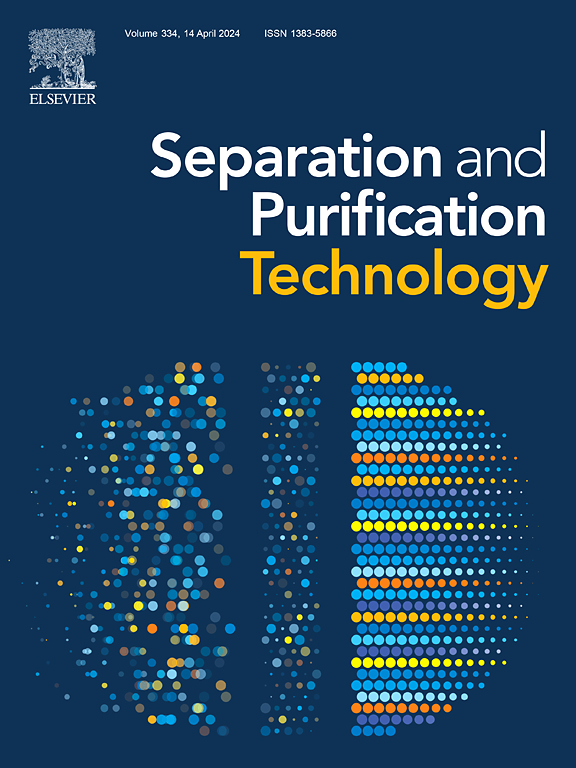Impregnated layer solution combustion synthesis of dark Ca-based thermochemical energy storage composites for direct solar-driven calcium looping
IF 8.1
1区 工程技术
Q1 ENGINEERING, CHEMICAL
引用次数: 0
Abstract
Ca-based thermochemical energy storage (TCES) materials hold promising prospects for thermal energy storage, considering their energy storage density, temperature compatibility, material safety, and cost. Nevertheless, challenges such as the susceptibility to sintering, and limited light absorption capabilities inherent in Ca-based TCES materials markedly restrict the practical deployment of solar-driven calcium looping (CaL) technology. Hence, this study employs impregnated layer solution combustion synthesis method fabricating Fe/Mn-doped Ca-based materials for thermochemical heat storage. Research indicates that 750 ℃ is the ideal temperature for combustion synthesis. Exceeding this temperature can lead to excessive sintering of Ca-based materials, while falling short results in the in-situ formation of the CaCO3 phase, both of which can degrade the pore structure of Ca-based TCES composites. The properties of synthesized materials are influenced by the type of impregnated layer template to some extent, with degreasing cotton yielding the Ca-based TCES composites with the most superior thermochemical heat storage properties. In addition, the Fe/Mn-doped Ca-based composite (Ca:Mn:Fe = 100:2:4) demonstrates excellent heat storage property (average energy storage density of 1.32 MJ/kg and an energy density loss of only 4.4 % during 20 cycles), along with favorable light absorption characteristics (solar absorption rate of 63.9 %). This is mainly due to the rich pore structure inherited from the degreasing cotton, and the Fe and Mn elements deepened the surface color of the synthetic material, and acted as an inert skeleton to alleviate the high-temperature sintering of the Ca-based TCES composites to a certain extent.求助全文
约1分钟内获得全文
求助全文
来源期刊

Separation and Purification Technology
工程技术-工程:化工
CiteScore
14.00
自引率
12.80%
发文量
2347
审稿时长
43 days
期刊介绍:
Separation and Purification Technology is a premier journal committed to sharing innovative methods for separation and purification in chemical and environmental engineering, encompassing both homogeneous solutions and heterogeneous mixtures. Our scope includes the separation and/or purification of liquids, vapors, and gases, as well as carbon capture and separation techniques. However, it's important to note that methods solely intended for analytical purposes are not within the scope of the journal. Additionally, disciplines such as soil science, polymer science, and metallurgy fall outside the purview of Separation and Purification Technology. Join us in advancing the field of separation and purification methods for sustainable solutions in chemical and environmental engineering.
 求助内容:
求助内容: 应助结果提醒方式:
应助结果提醒方式:


